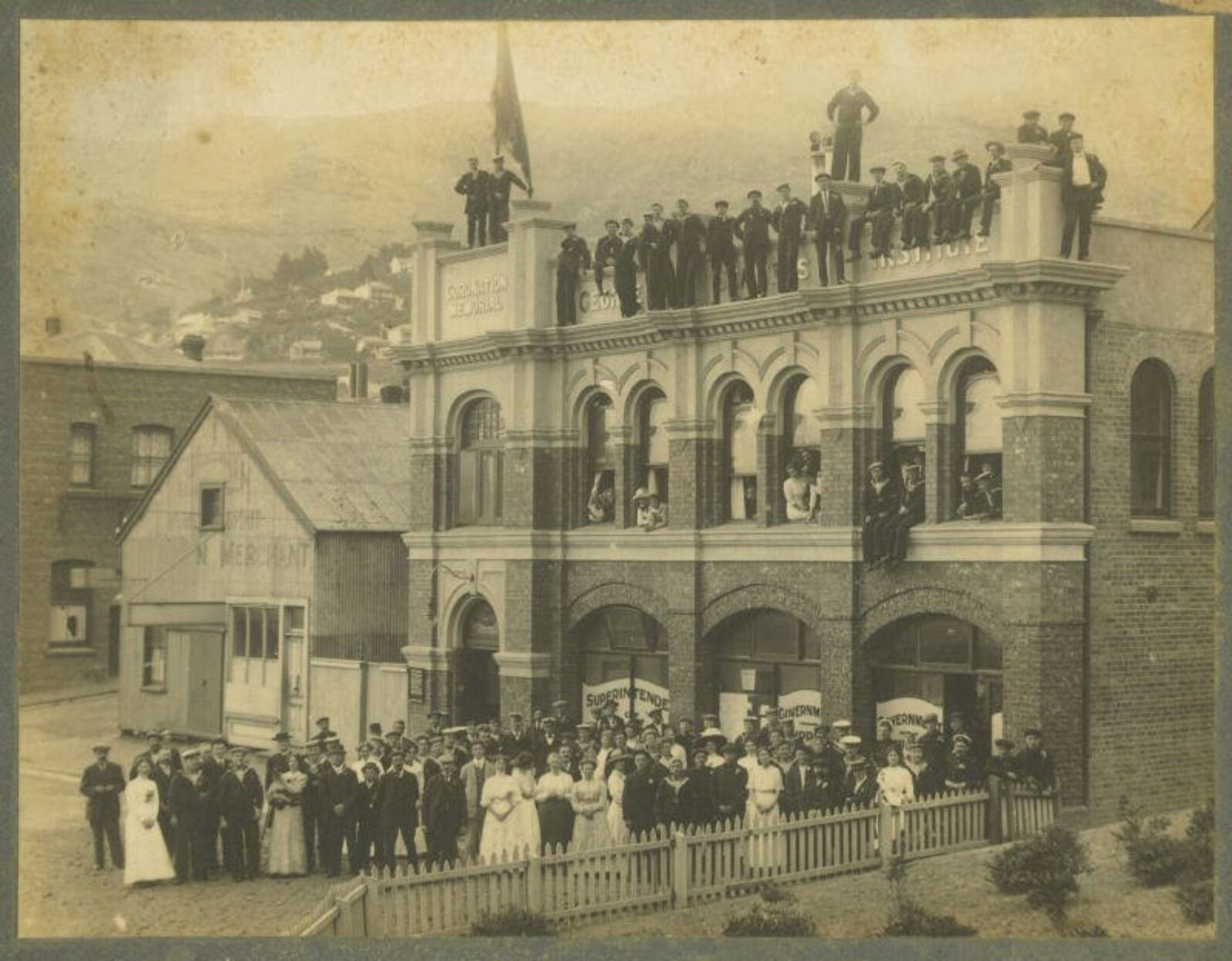PO Box 95
Lyttelton 8841
Te Ūaka recognises Te Hapū o Ngāti Wheke as Mana Whenua and Mana Moana for Te Whakaraupō / Lyttelton Harbour.
Winter Weather
With the record breaking July rainfall over the past few weeks and a harbour turned muddy brown from runoff, cold, winter weather is at the forefront of many people's minds. Ōtautahi Christchurch has been dealing with significant flooding especially along the banks of the Ōtakaro Avon and Ōpāwaho Heathcote rivers. Issues in Ōhinehou Lyttelton and the wider peninsula have been more associated with the hilly landscape, with numbers of damaging slips and crews hard at work to clear the debris and make several roads and some houses safe.
At such a time it seems fitting to feature some wintery images from our Collection depicting previous significant weather events. The first image was taken during one of the heavy snowfalls pre 1900; perhaps these snow conditions are almost preferable to the deluges of recent weeks, although a frozen harbour in July 1895 had to be seen to be believed.
“Residents at Lyttelton were greatly surprised yesterday morning to find that the outer harbour from Officers’ Point, across to Ripa Island and Diamond Harbour, and up to Governor’s Bay was frozen over with a sheet of ice fully half an inch thick. The report was scarcely credited at first, but seeing was believing…”
There were significant snow storms that affected Whakaraupō Lyttelton Harbour in 1862, 1895, 1896, 1901, 1918, 1945, 1992, 2006, 2010, 2011, 2012, 2013 and 2015. In the late 19th century snowfalls could be deadly, especially in inland Canterbury where stock losses were high and a few farmers died of exposure.
In Ōhinehou Lyttelton, problems associated with big snowfalls were usually to do with slips, flooding, power outages and business closures. Our second image shows Lyttelton Borough Council staff likely assessing issues after the ‘Big Snow’ of 1945. Snow fell to a depth of nearly half a metre from the 12th to the 14th of July, interspersed with gale force winds, causing extensive disruption to power, telephone, road and rail lines. Do you know these hardy men, named in the photo caption?
The view of snow on houses looks south east toward the Timeball Station ridgeline – the Timeball Station itself is just visible above the dark stand of trees. Possibly taken during the snowstorm of late June / early July, 1918, gracious villas and smaller cottages stand on large sections, before the infill of housing of more recent decades.
See also the 1918 Snowstorm and the 1945 Snowfall.
